30 Healing Postpartum Workouts to Burn Baby Fat
Motherhood changes everything—your routines, your body, your sleep, and your priorities. As a new mom, your focus is (understandably!) on your baby. But your recovery matters too. If you’re looking to gently ease back into movement, lose some baby weight, and start feeling strong again, you’re not alone. Studies show that consistent, low-impact exercise post-delivery helps improve energy, reduce stress, and support fat loss without overloading your recovering body.This list of 30 healing postpartum workouts is crafted with busy moms in mind. You don’t need hours or expensive equipment. Just a few minutes a day can make a real difference. Whether you’re six weeks postpartum or six months, these exercises focus on core strength, pelvic stability, fat burning, and mobility to help you regain confidence in your body.Let’s dive in!
1. Diaphragmatic Breathing
Diaphragmatic breathing is the foundation of postpartum core recovery. It activates the transverse abdominis—your deepest core muscle—which often becomes overstretched during pregnancy. By focusing on breath and gentle engagement, this technique helps reconnect the brain with the pelvic floor and core.Lie down or sit comfortably. Place one hand on your chest and one on your belly. Inhale deeply through your nose so your belly rises while your chest stays still. Exhale slowly through pursed lips, engaging your deep core. Repeat this for 5–10 breaths.This calming breathwork not only supports muscle recovery but also helps regulate cortisol levels, which aids in postpartum fat burning. Practicing daily can reduce stress and promote internal healing.

2. Pelvic Tilts
Pelvic tilts are a great early core and posture exercise. They gently engage your abdominal muscles and lower back, helping realign the spine and pelvis, especially if you’ve experienced back discomfort from pregnancy or labor.Start by lying on your back with knees bent and feet hip-width apart. Gently tilt your pelvis upward, flattening your lower back into the floor. Hold for 3 seconds, then release. Do 10–12 reps.Over time, this simple move strengthens your deep abdominal muscles and contributes to improved posture—something every new mom can benefit from after hours of feeding and rocking.

3. Glute Bridges
Glute bridges strengthen your backside, which tends to weaken during pregnancy due to posture shifts and underuse. They also help stabilize your pelvis and lower back, improving overall alignment.To begin, lie on your back, knees bent, feet flat on the floor. Engage your glutes and lift your hips toward the ceiling. Pause at the top, then lower slowly. Do 2–3 sets of 10 reps.This move fires up the core and burns calories without putting stress on the abdomen or joints. It’s an excellent postpartum fat-burning staple that can evolve with your strength.
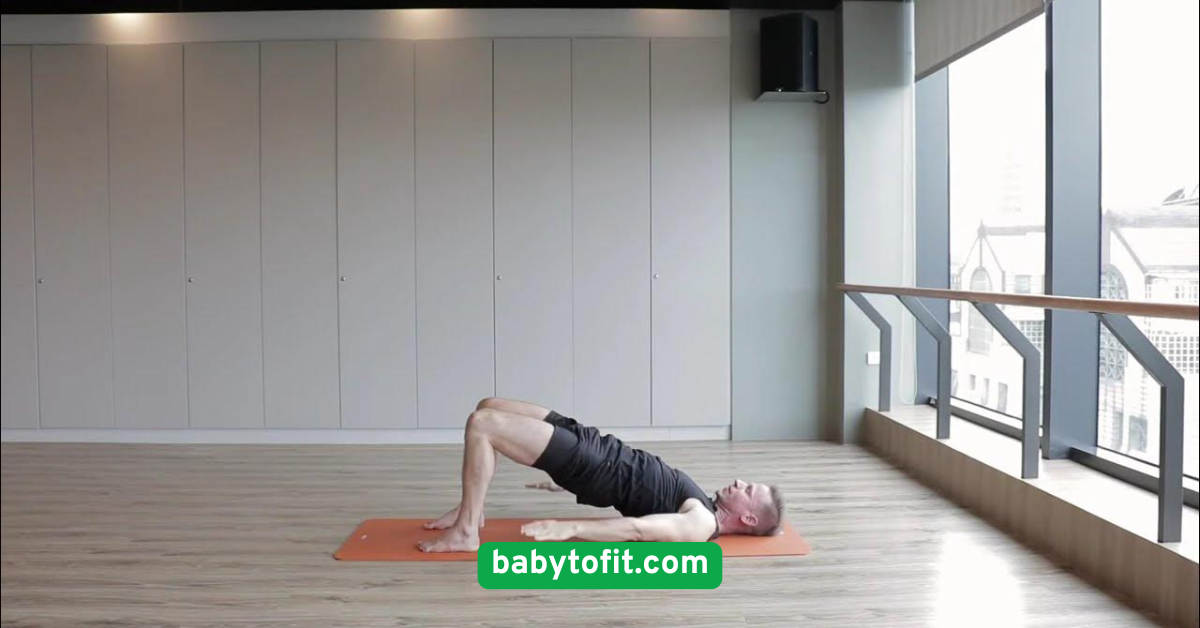
4. Seated Marches
Seated marches provide gentle cardio and hip mobility without the need to stand—ideal for early postpartum or when you’re holding your baby. They improve circulation, get the heart rate up, and lightly engage the core.Sit upright in a sturdy chair, feet flat. Lift one knee toward your chest, then lower and alternate. Do this for 1–2 minutes in a rhythmic motion.This exercise is perfect for new moms who need safe movement that feels doable. Over time, it helps restore endurance and supports your return to higher-intensity workouts.
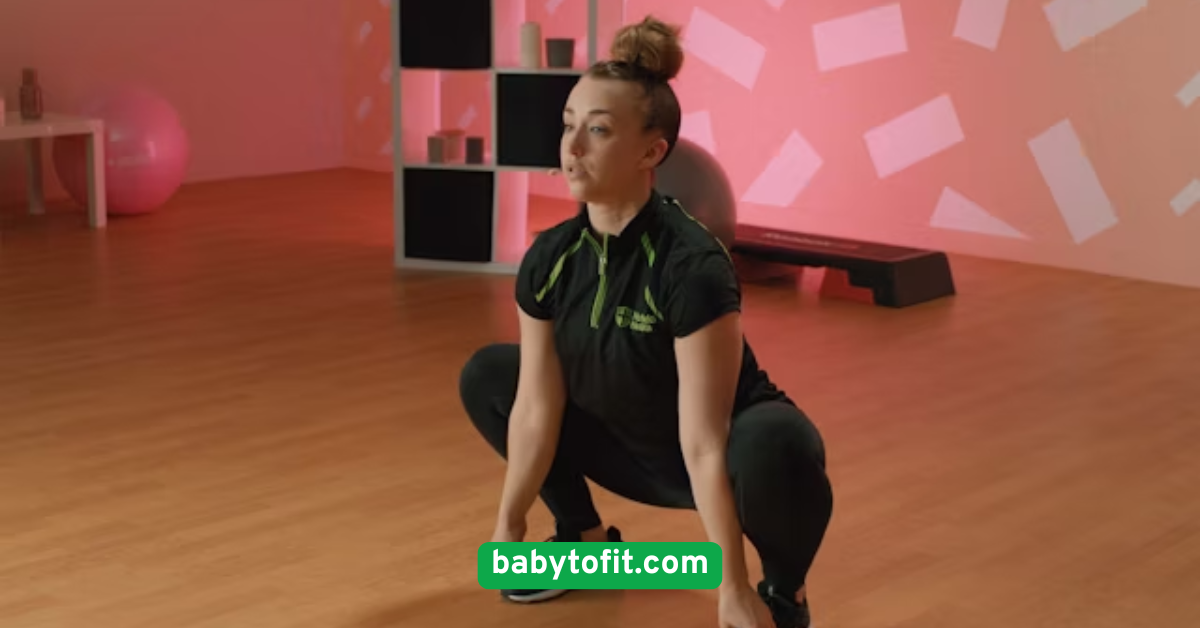
5. Cat-Cow Stretch
The cat-cow stretch is a gentle yoga movement that relieves spinal stiffness and promotes mobility, especially in the back and neck. It also encourages core activation through breath-linked motion.On all fours, inhale as you drop your belly and lift your chest (cow pose). Exhale as you round your back and tuck your chin (cat pose). Repeat for 8–10 rounds.This stretch not only eases tension built from nursing and holding your baby, but it also enhances circulation and flexibility in a soothing, intentional way.
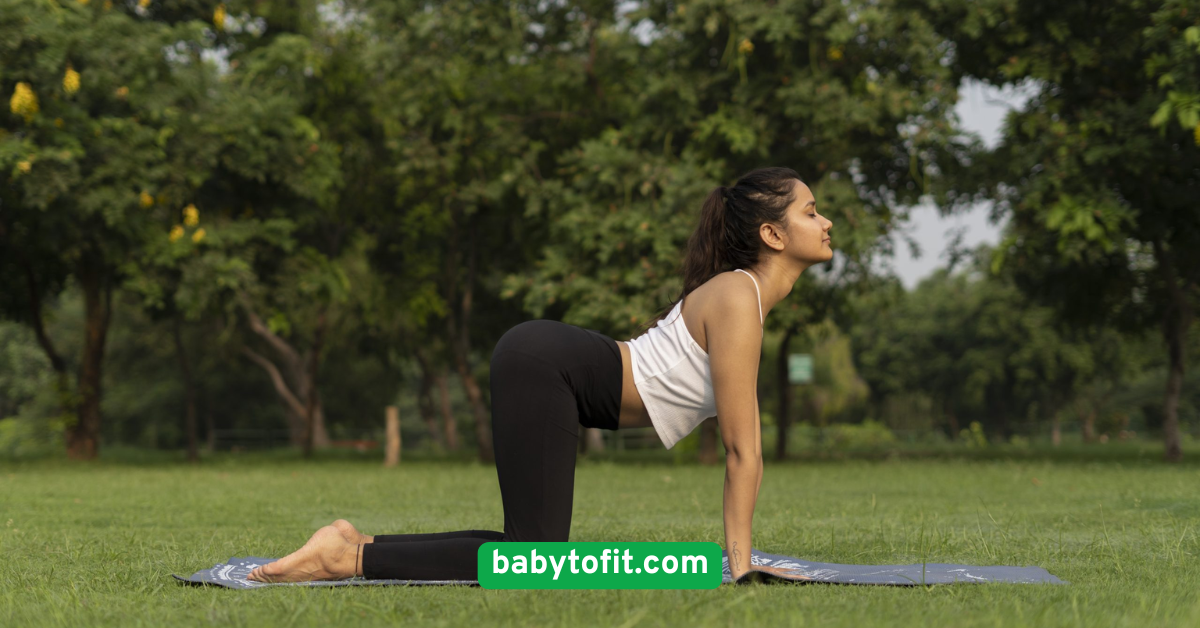
6. Standing Wall Push-Ups
Wall push-ups are an ideal way to reintroduce upper body strength training postpartum. They tone your chest, arms, and shoulders while being easy on the core and lower back.Stand facing a wall, arms extended. Lower your body toward the wall, keeping your back straight, then push back. Perform 10–15 reps.This move mimics traditional push-ups without the strain and helps you rebuild arm strength needed for baby-carrying and daily tasks.
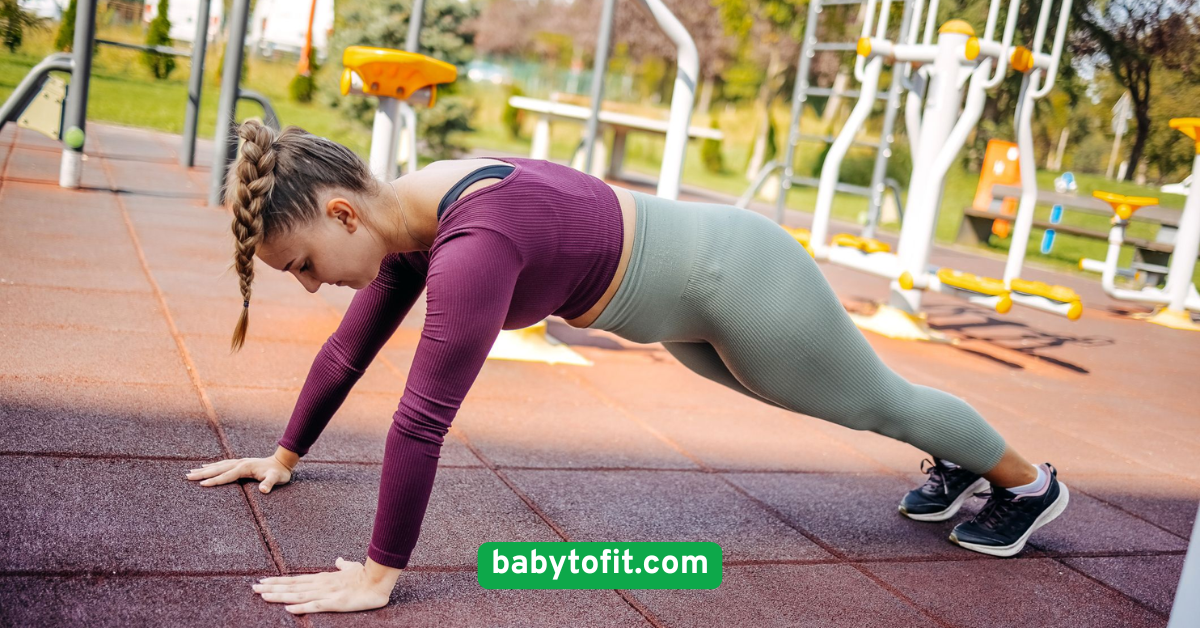
7. Kegel Exercises
Kegels are the cornerstone of pelvic floor recovery. These exercises rebuild internal muscle strength, enhance bladder control, and support core engagement.Tighten your pelvic floor muscles (as if stopping urine midstream), hold for 5 seconds, then release. Repeat 10 times, three times a day.They may feel subtle, but consistent Kegel practice is essential for long-term postpartum wellness and fat-burning movement efficiency.

8. Side-Lying Leg Lifts
Side-lying leg lifts target the hips and thighs while supporting pelvic alignment. They strengthen underused muscles and improve side-body stability, which is often compromised after delivery.Lie on your side with legs extended. Lift your top leg slowly, pause, then lower. Do 10–12 reps per side.This movement is gentle but effective, helping sculpt the lower body while being safe for the postpartum core.
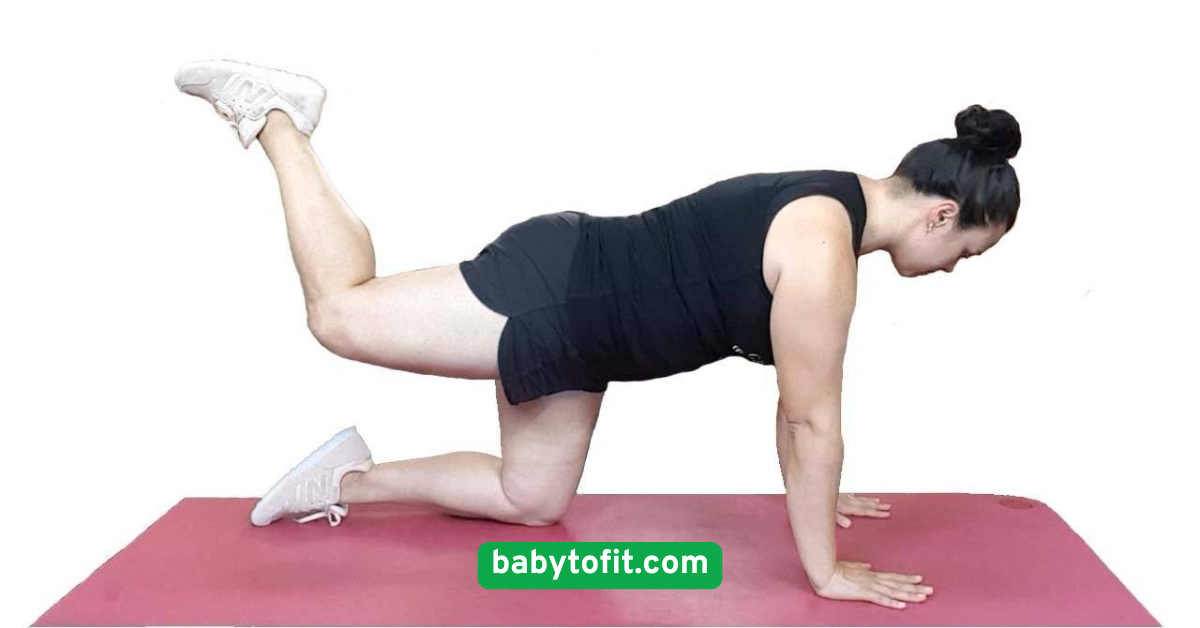
9. Walking (with or without stroller)
Walking is a simple, accessible form of cardio that helps burn baby fat while being gentle on your joints. You can walk solo, with your baby in a stroller, or even during babywearing sessions.Start with 10–20 minute strolls around your neighborhood or park. Over time, you can increase the pace or duration based on how your body feels.This movement boosts mood, regulates hormones, and gets your body moving naturally. It’s also a great excuse to get fresh air, clear your mind, and connect with your baby or nature.

10. Bird-Dog Exercise
Bird-dog is a core stabilization move that strengthens your back, abs, and glutes while enhancing overall balance. It also supports posture recovery after months of pregnancy-related shifts.Begin on all fours, hands under shoulders, knees under hips. Extend your right arm forward and left leg back, keeping your spine neutral. Hold for 2–3 seconds, then switch sides.Repeat 10 times per side. This exercise builds endurance in deep stabilizing muscles and is perfect for gradually reclaiming your core strength postpartum.

11. Child’s Pose Flow
Child’s Pose Flow is a calming yoga sequence that encourages your body to unwind and gently stretch. For postpartum moms, it’s a grounding way to counteract tension in the lower back, hips, and shoulders—common problem areas after childbirth.Start by kneeling on the floor, big toes touching, and knees wide. Reach your arms forward and rest your forehead on the mat. Inhale deeply. Exhale and gently shift your hips back, feeling the stretch deepen. Add a gentle rock or flow forward and back for dynamic relief.This move allows you to check in with your breath, calm your nervous system, and reset during a busy day. Plus, it’s an excellent cooldown or warm-up to balance your workout routine.

12. Arm Circles
Arm circles may seem simple, but they’re surprisingly effective for building shoulder endurance and toning your upper arms. As a mom, you’re constantly lifting and holding—this movement supports that strength.Stand tall and extend your arms to the sides. Begin making small forward circles, gradually making them larger. After 20 seconds, reverse the direction. Repeat for 3 sets.You can perform these with or without light weights for an extra burn. It’s a fantastic low-impact way to tone while multitasking—great during baby playtime or quick breaks.

13. Seated Toe Taps
This move is excellent for engaging the lower abdominals without placing undue pressure on the pelvic floor. It’s ideal if you’re still healing from diastasis recti or recovering from a C-section.Sit on a sturdy chair, lean back slightly, and lift both feet off the floor. Alternate tapping each foot down while keeping your core engaged. Perform 15–20 reps per side.This subtle motion can be deceptively challenging and helps retrain your core in a controlled, safe way. It also increases blood flow and reactivates important muscle groups.
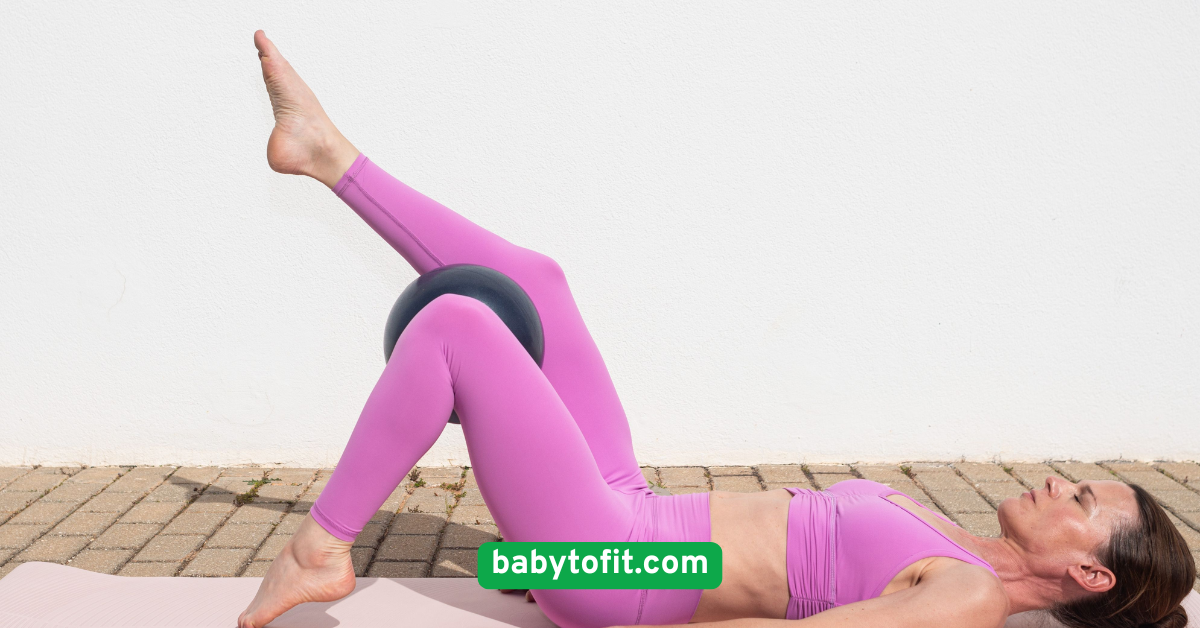
14. Chair Squats
Chair squats are a beginner-friendly lower body exercise that builds strength in the quads, hamstrings, and glutes. They mimic everyday movements like sitting and standing—critical for busy moms.Stand with your back to a chair, feet shoulder-width apart. Lower yourself until you gently touch the seat, then push through your heels to stand up. Complete 10–15 reps.This functional move boosts calorie burn and helps improve core-to-lower-body coordination, aiding in faster postpartum recovery.

15. Postpartum Yoga Flow
A gentle yoga flow is a complete recovery tool. It combines movement, flexibility, and mindfulness—an ideal trio for healing after childbirth. Sequences often include spinal twists, hip openers, and restorative poses.Even 10–15 minutes of flowing between poses like Warrior I, Triangle, and Cat-Cow can significantly impact stress levels and muscle tone. Focus on breath-led movement to connect with your body.Yoga enhances circulation, reduces cortisol, and helps reconnect you with your changing body in a nurturing, judgment-free way.

16. Side Step Touches
This low-impact cardio move strengthens the hips, glutes, and thighs while boosting your heart rate. It’s a great way to sneak in fat-burning movement while staying joint-friendly.Stand tall and step your right foot to the side, then bring the left foot to meet it. Add a gentle arm swing for more intensity. Continue side-to-side for 30–60 seconds.It’s fun, rhythmic, and easy to modify. Plus, you can do it while holding your baby or watching your favorite show.
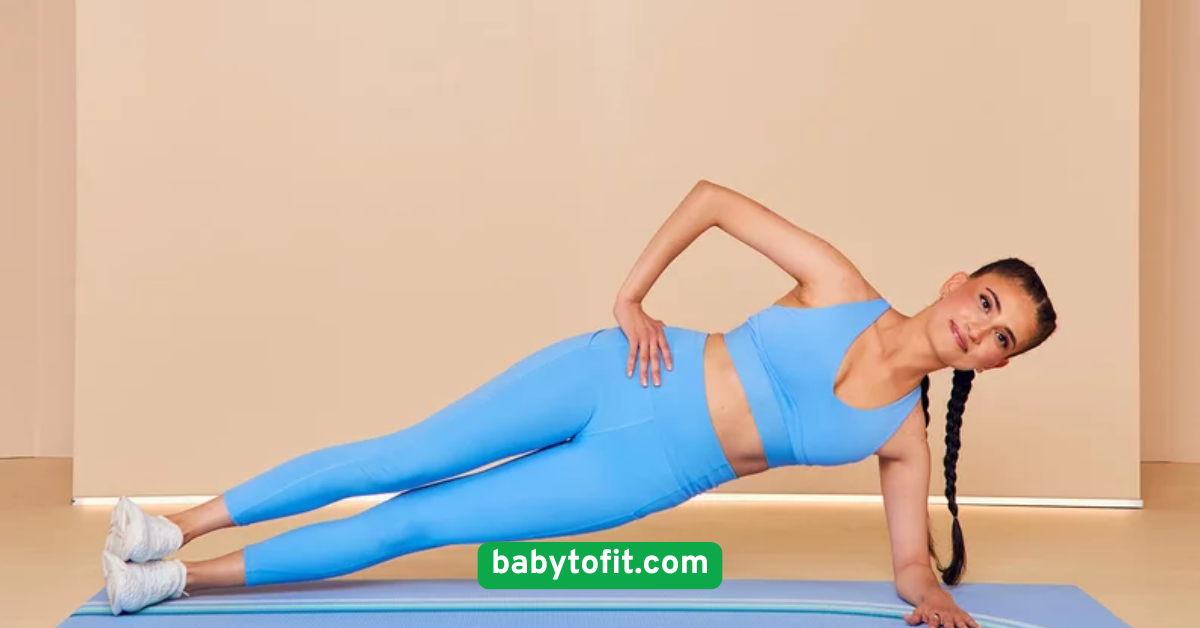
17. Modified Plank on Knees
Postpartum planks help rebuild core strength and shoulder stability. The knee-supported version protects the healing abdomen while still being effective.Get into a plank position with knees on the ground, hips in line with shoulders. Keep your core tight and hold for 15–30 seconds. Gradually increase the time as you get stronger.This static hold teaches muscle endurance and proper alignment, all crucial for returning to full body workouts safely.
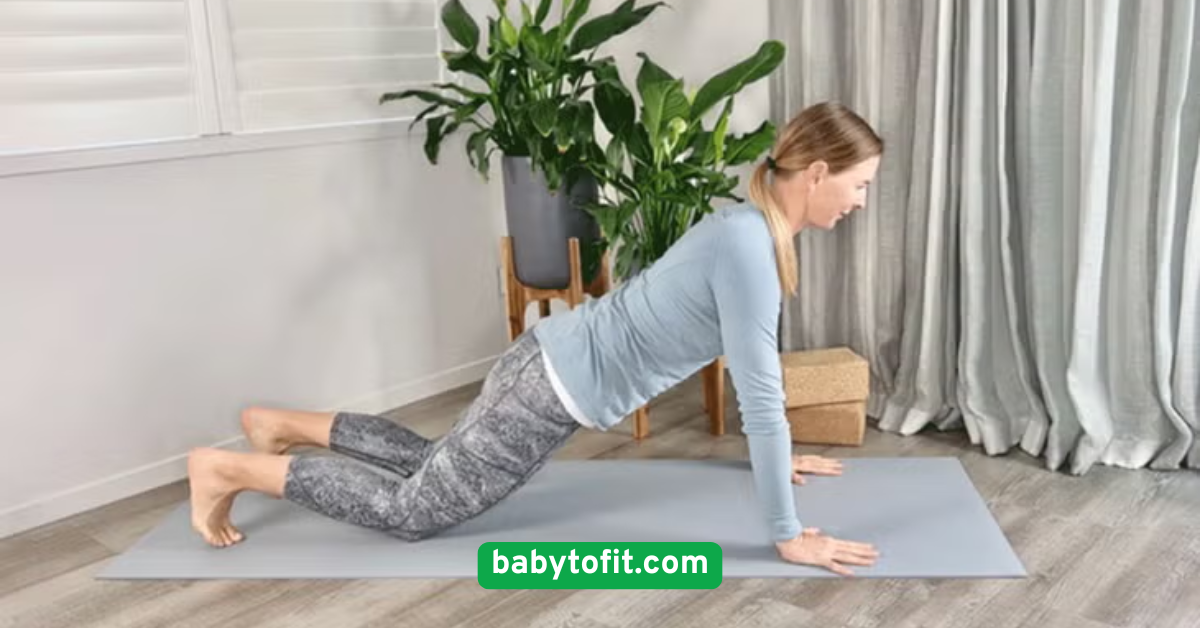
18. Baby-Wearing Walks
Strap your baby into a carrier and hit the pavement—or just walk around your home. The added weight increases calorie burn, and the close contact soothes your little one.Focus on posture: engage your core, keep shoulders back, and walk at a pace that feels sustainable. Even 10–20 minutes is a great start.It’s a multitasking dream—exercise, bonding, and mental refresh all in one. Plus, babies often nap more soundly after a walk!
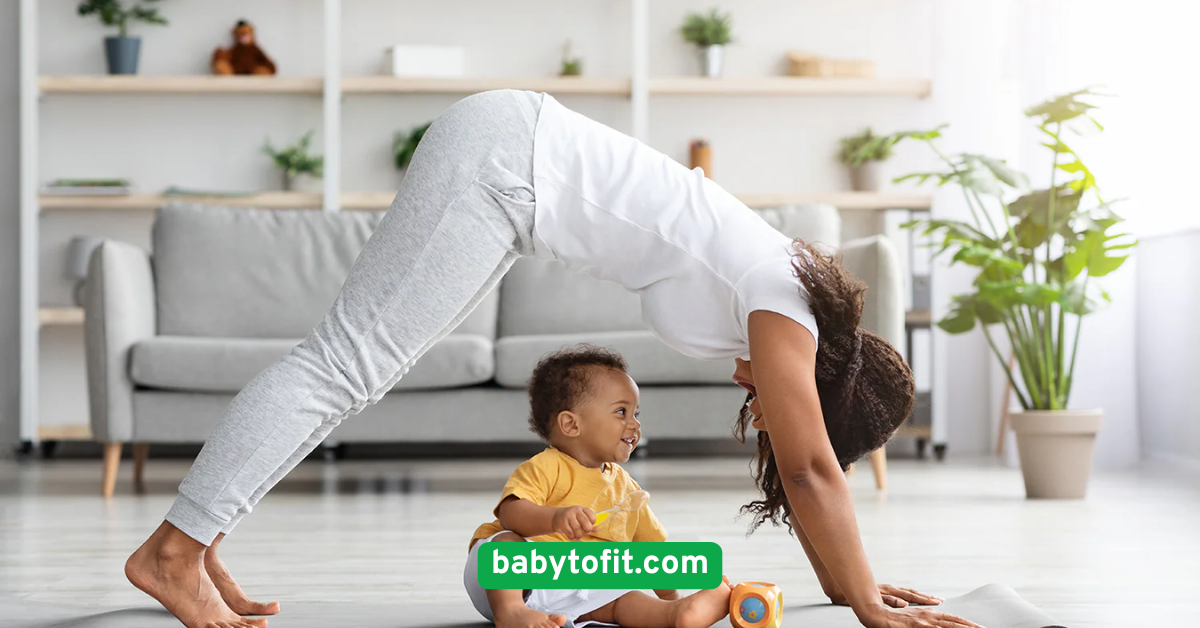
19. Calf Raises
Calf raises target your lower legs, improving balance and circulation. These muscles play a key role in walking, standing, and daily mobility.Stand with feet hip-width apart, slowly rise onto your toes, then lower. Do 2–3 sets of 15 reps.This move can be done anywhere, even while brushing your teeth or rocking your baby. It gently contributes to your overall fat-burning routine.

20. Hip Circles
Hip circles increase mobility, strengthen stabilizers, and help reset tight areas from pregnancy and birth. They also gently engage the core.Stand with knees soft and hands on hips. Slowly rotate your hips in wide circles for 10 reps in each direction.Add them as part of your warm-up or cool-down. This move is also fantastic for dancing with your baby and reconnecting with movement.

21. Low-Impact Step-Ups
Find a step, low bench, or sturdy stair. Step-ups build lower body power, improve heart rate, and mimic daily functional movements.Step one foot up, then bring the other to meet it. Step down and repeat, alternating leading legs. Do for 1–2 minutes.This move combines cardio and strength, making it a postpartum fat-burning powerhouse that’s easy to scale.
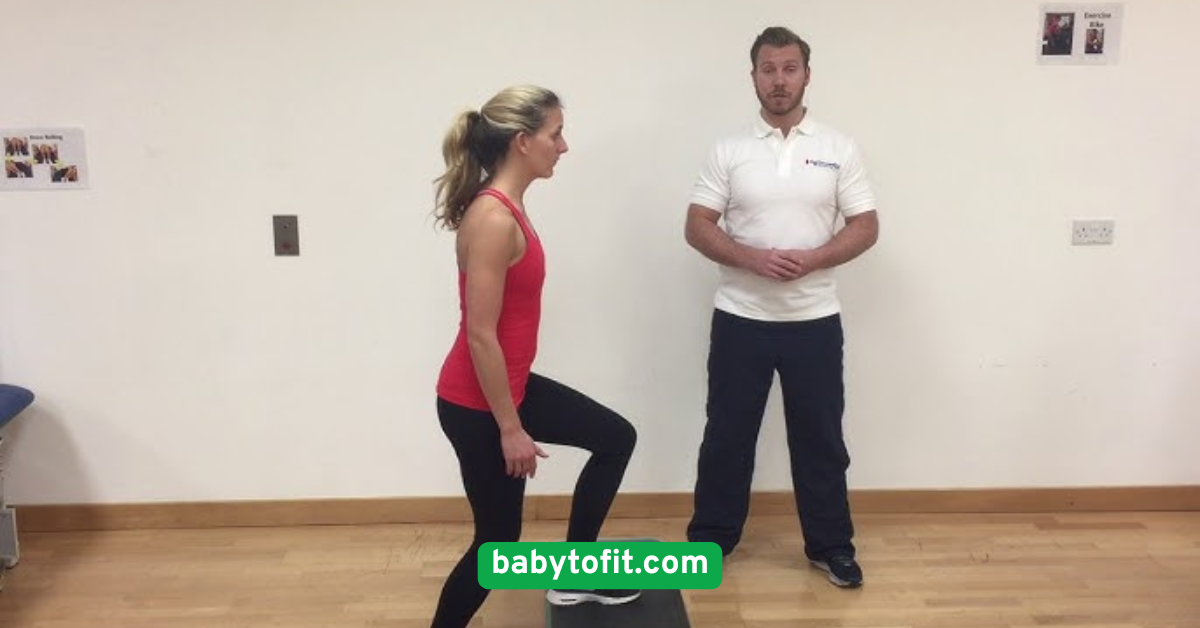
22. Shoulder Rolls
Ease shoulder tension with this simple movement. Nursing, lifting, and carrying baby puts strain on your upper body—this helps alleviate tightness.Sit or stand tall. Slowly roll your shoulders up, back, and down. Repeat 10 times, then reverse the direction.This can be done multiple times a day for relief and posture support. Add deep breaths for extra relaxation.

23. Modified Bicycle Legs
Traditional bicycles can strain a healing core, but modified versions keep it gentle and effective. Focus on slow, controlled movements.Lie on your back, knees bent, feet lifted. Alternate extending each leg while keeping abs lightly engaged. Do 10–12 per side.It’s great for reintroducing rotational core work, which is important for regaining full core strength and balance.
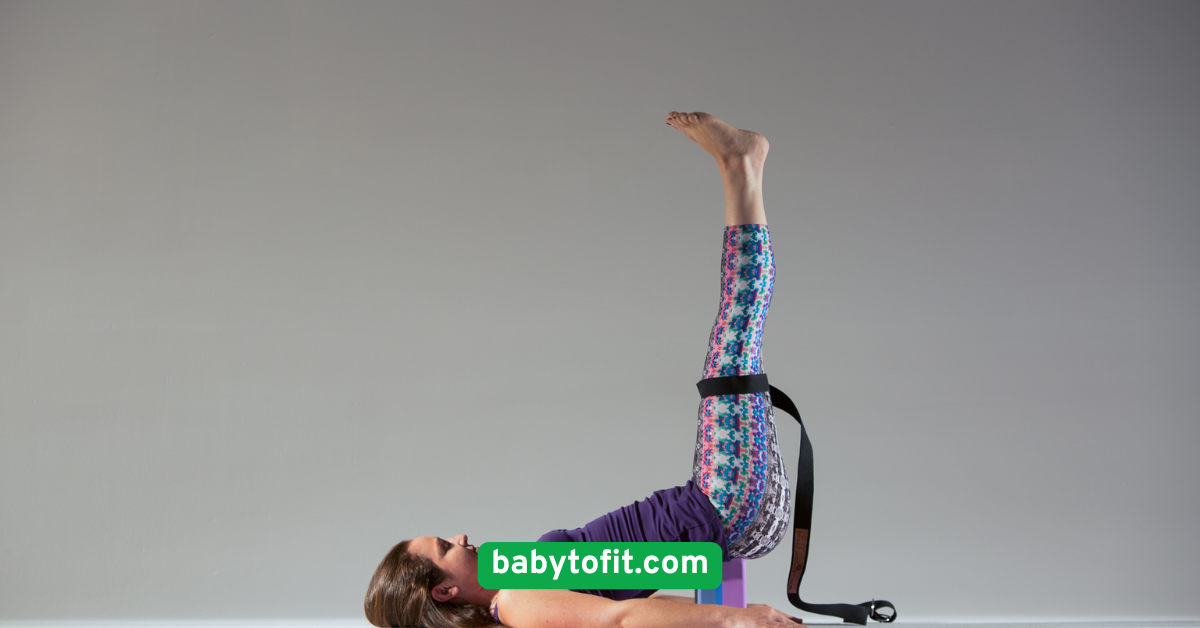
24. Seated Spinal Twist
This yoga-inspired move increases spine mobility and supports digestion—often sluggish post-baby. It also encourages mindful breathing.Sit with legs crossed or extended. Inhale and lengthen your spine, exhale and twist to one side, using your hand behind you for support. Hold for 20 seconds, then switch.It’s gentle, grounding, and deeply restorative.

25. Floor Slides (Heel Slides)
Heel slides teach core control while keeping your spine neutral. They’re ideal for very early postpartum days.Lie on your back, knees bent. Slide one heel away from your body, then return. Alternate legs for 10 reps each.This low-load move rebuilds foundational core awareness, which supports all future workouts.
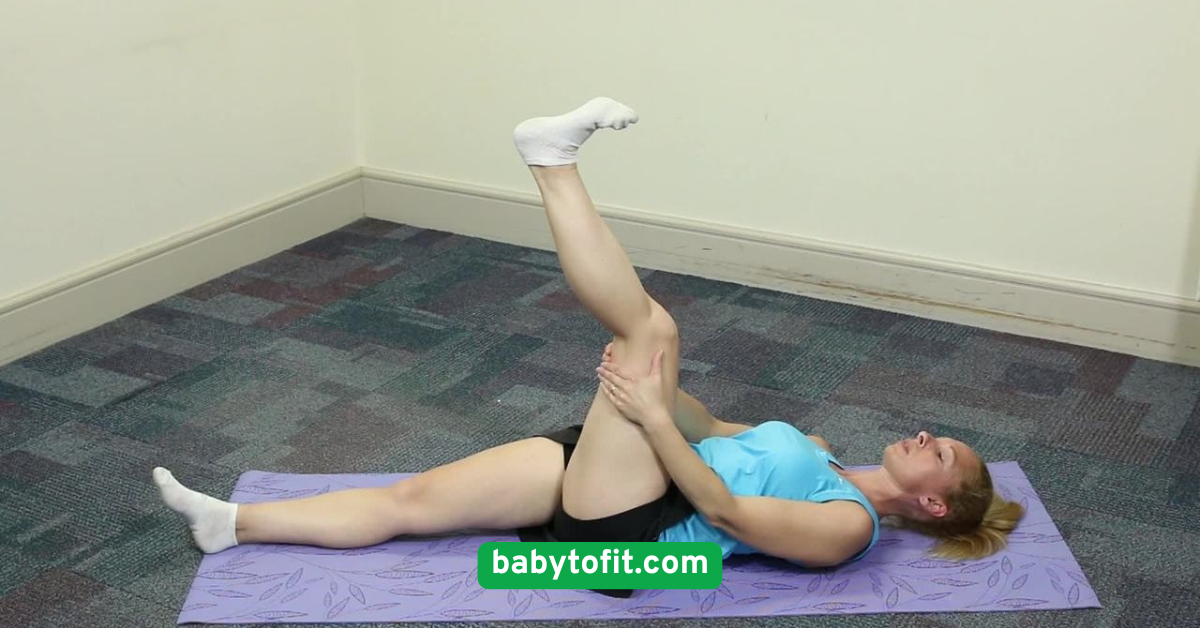
26. Gliding Lunges
With a towel under one foot, glide into a side or reverse lunge. This variation builds leg and core strength while keeping movement controlled and low impact.Focus on keeping the standing knee aligned and spine tall. Perform 8–10 reps per leg.It’s great for reintroducing single-leg training, improving balance and coordination postpartum.

27. Standing Hip Abductions
Targeting the outer hips, this move improves lateral strength and pelvic stability.Stand tall, lift one leg to the side without leaning. Pause, then lower. Use a wall or chair for balance. Do 10–12 reps per side.You can add resistance bands as you progress. It’s excellent for moms working on rebuilding glute support.
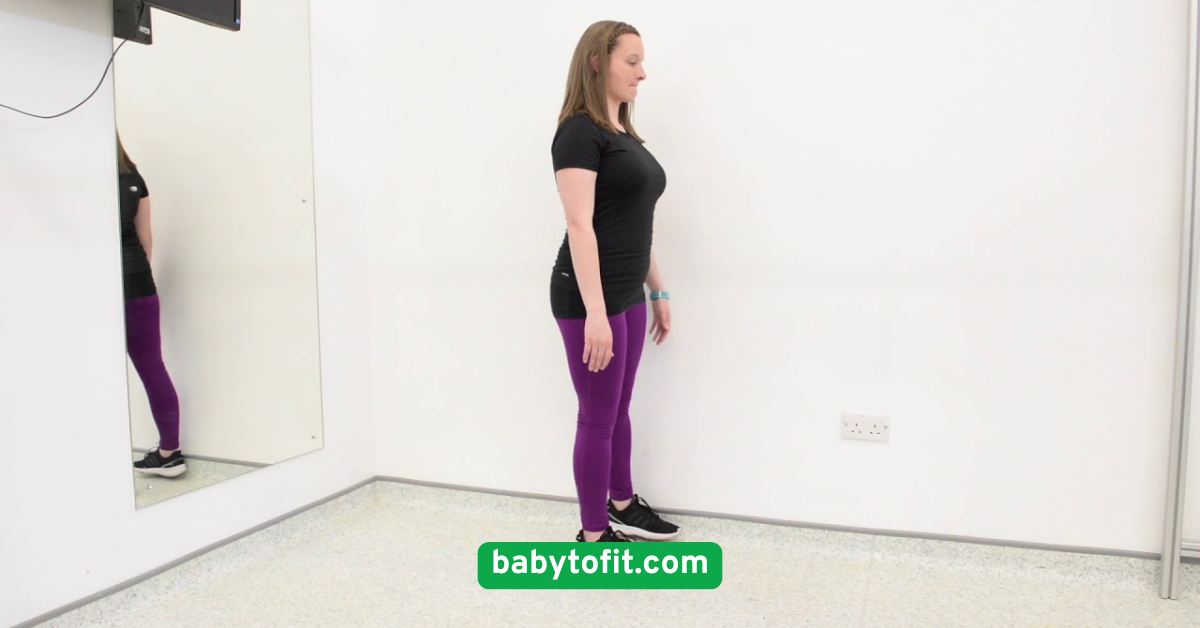
28. Lying Knee Drops
This core move gently engages your obliques and stabilizers without straining your midsection.Lie on your back with knees up, arms out. Slowly lower knees to one side, then bring them back. Repeat 10 times, alternating sides.It’s calming, controlled, and ideal for reintroducing rotation to your workouts.
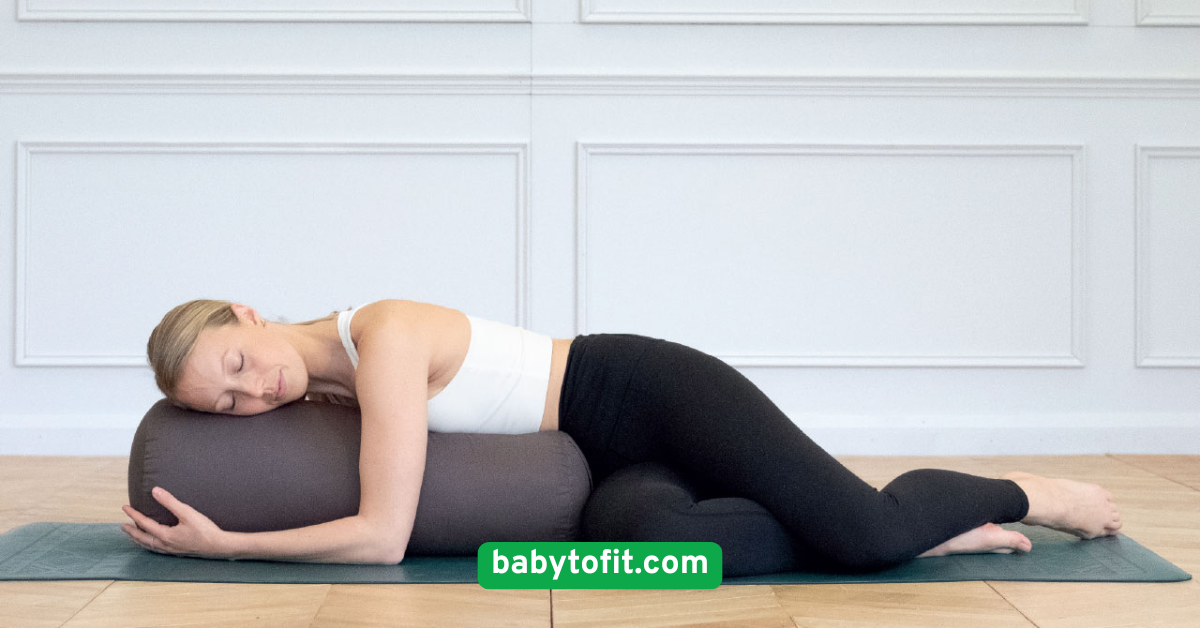
29. Clamshells
Clamshells fire up the glute medius—a critical muscle for pelvic alignment and strength.Lie on your side, knees bent. Keeping feet together, lift your top knee. Pause, then lower. Do 12 reps per side.This foundational move should be a staple in every postpartum plan. Add a mini resistance band as you progress.

30. Dance-Inspired Moves (Low-Impact)
Turn on your favorite playlist and move! Low-impact dance gets your heart rate up, improves coordination, and lifts your mood.Whether it’s side steps, arm swings, or light bouncing, dance is a fun way to reconnect with your body and burn calories.No rules—just joy. It’s the perfect way to stay active when structured workouts feel overwhelming.






